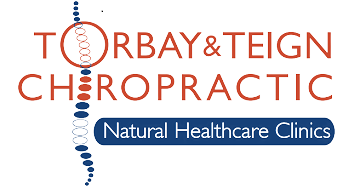Are you confused by whether you should choose chiropractic treatment or physiotherapy?
Both can be used to treat a number of conditions including back pain and sciatica. Both treat musculo-skeletal conditions and problems with joints, and both have the aim of giving you back normal body function, increasing movement. But the main difference between the two is that a chiropractor traditionally uses manipulation to treat a patient, where as a physiotherapist will more often use mobilisation techniques.
We get asked this a lot in our clinic, and it can be all to confusing. They seem on the surface to do the same and as it’s important to get the right treatment for your condition, we’ve out together a quick blog post on how they differ:
Chiropractic
Chiropractors gently manipulate joints and limbs where they discover restricted movement, restoring body function with hands-on techniques. The aim is to help you move more easily and freely.
They’re also trained to take and read X-rays, will work with patients on their diets to support their work, and some use complementary therapies such as acupuncture.
Chiropractors have an overall interest in how the body works and they are highly trained, studying on a three, four, or five-year degree course. Chiropractors must be registered with the General Chiropractic Council and must adhere to the GCC’s code of practice and standards of proficiency for the profession. You can find out more here http://www.gcc-uk.org/registration/. Many chiropractors, (as we are) are also members of the British Chiropractic Association.
Conditions which chiropractors treat include sciatica, headaches caused by problems in the neck and tension, vertigo or dizziness caused by neck problems, joint conditions, and chronic and acute pain in the lower back.
If your joints or back feel stiff or locked, or sore, or your problems haven’t improved with other treatments, chiropractic treatment would tend to be a good choice for you.
Physiotherapy
Physiotherapists tend to use a range of techniques to mobilise their patients. Those techniques include massage, exercise, manipulation, and electrical therapies.
They have a wide remit – helping post-operative patients with rehabilitation, helping some clients with breathing problems, helping people who have had strokes or paralysis regain function and strength, and assisting in the recovery from sports injuries.
The aim is to help people move and function to the best of their abilities. The treatments can help patients remain in their own homes and take more active roles in their communities.
Physiotherapists are also highly trained. They study on three, four, or five-year degree courses, and work in hospitals, in people’s homes, or in their workplaces.
Physiotherapists must be registered with the Health and Care Professions Council and meet its standards of proficiency for the profession. This applies whether the physiotherapist is employed on a full or part-time basis, or carrying out the role voluntarily.
Many also belong to the Chartered Society of Physiotherapists, which seeks to maintain standards in the profession.
Physiotherapists treat swelling in the joints, repetitive strain injury, cartilage, tendon, and ligament damage, sports injuries, arthritis, sciatica, and back and neck pain.
If you have muscular problems or swollen joints which are sore or painful and restricting your movement, or soft tissue problems, a physiotherapist could be the ideal choice for you.
Many practices like us at our Torbay and Teign Chiropractic and Natural Health Clinics, offer both solutions. After an initial consultation, patients are referred to the best practitioner for their conditions.
Book your consultation today to find out which solution is best for you. Call 01803 329799 to speak to our friendly reception team who will be able to help you.

